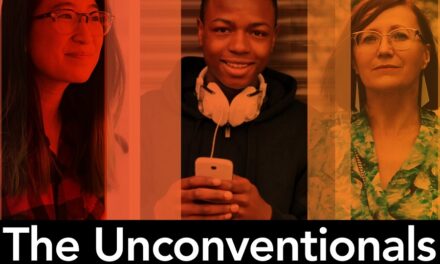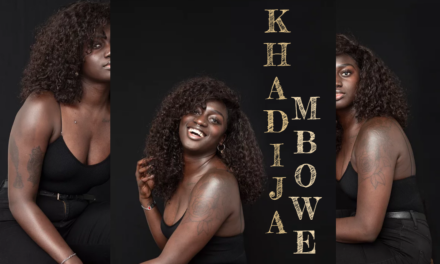Google’s Arts & Culture app came out a few years ago. So why are you suddenly hearing so much about it now? Because Google introduced a selfie feature. Surprise, surprise: everyone suddenly discovered a newfound interest in arts and culture.
Marketers can learn a lot from the app’s sudden success, from how to create marketing campaigns that stand a chance of going viral to planning ahead for the future. But first, let’s back up a minute.
What is Google’s Arts & Culture App?
Google’s Arts & Culture App brings the museums of the world to your smartphone. Available for free on iOS and Android, the app lets users browse more than 70,000 works of art from over 1,000 museums. They can read more about the artwork, the artist, and the museum, all without having to push through hordes of tourists to get up close.
The app’s new selfie feature, released over MLK weekend, asks users “Is your portrait in a museum?” and then compares their selfies to those 70,000 works of art.
On the Saturday before MLK day, Buzzfeed wrote an article about the app titled “Twitter Is Cracking Up Over The Google Arts & Culture Face Match.” It included photos by the article’s author showing how the app worked, along with humorous results from ordinary (i.e. non-famous) people on Twitter.
Downloads skyrocketed, reaching 12.8 million over the holiday weekend. By Monday, the app held the coveted #1 spot in both the Android and iOS app stores. Meanwhile, in Paris, 30 Google employees worked through the weekend to keep it up and running, supporting users during peak times of 450,000 selfies per hour.
Imagine if this app belonged to your brand.
9 Marketing Lessons from Google’s Arts & Culture App
You don’t have to be an app marketer to learn something from the success of Google’s Arts & Culture app. It offers lessons for marketers of all kinds who want their next product launch, PR stunt, or social media post to go viral.
1. Make it about them, not you
Ask any copywriter or UX designer, and they’ll tell you that the golden rule of marketing is to make it about your user, not you. Google did that perfectly with their Arts & Culture app.
Google does a lot of things right, but one thing that’s enabled it to be so successful is the brand perception that everything they do is out of pure benevolence for the sake of their users.
Google had many self-interested goals with this app, such as:
- Showing off its technological capabilities
- Partnering with museums worldwide to make the art database more complete
- Improving its AI and photo recognition technology for Google Image Search
The Arts & Culture app’s first iteration was purely an educational app. It made art more accessible to users, sure, but it was more about the technology than anything else. The app finally enjoyed widespread user adoption once they introduced the selfie feature. Now the app is first and foremost about the user, not Google’s tech capabilities or even the art itself.
Meanwhile, Google is still able to check off the boxes on its other goals–revealing that it’s way ahead of the game on AI and facial recognition technology, all while introducing the world to great art. It makes a great PR story. The lesson here for marketers is that you won’t get anywhere unless you serve your user’s needs first. Make a product tutorial that’s genuinely helpful, instead of an obvious ploy to sell upgrades. Display your your latest product innovations in a way that emphasizes their benefits to users, instead of boasting about your technological advances. Delight customers with branded experiences that are just plain fun, with no other goals in mind.
2. But… it can still be about you
While the focus should always be on your user first, there are ways to make it about you, too. From the Wall Street Journal to Good Housekeeping, plenty of the news organizations reporting on the Arts & Culture app’s success have contributed by publishing selfie results from their staff. This tends to happen whenever something goes viral, and companies capitalize by sharing their own own trials and tribulations with Pokémon Go or the Ice Bucket Challenge.
The lesson here for marketers is to put a face to your brand. Technology connects us all, so use it to connect with your customers by showing your human side (or in this case, your artistic side). People like working with people, not faceless brands.
3. Recognize the power of the selfie
Speaking of faces, people also like photos of people. They like photos of themselves even more, especially when they can easily share them on social media. Google’s Arts & Culture app satisfies both those desires.
The lesson here for marketers is that we are now living in a selfie world. Always be thoughtful about how you can incorporate selfies and social media into your marketing. Be sure to handle the obvious: make photo sizes ideal for social media consumption, and brainstorm a good hashtag.
4. Get user feedback
It’s important to note that Google wasn’t successful right out of the gate with this app. It took a few years, and a brand new selfie feature, for the app to really explode in popularity. The company didn’t get discouraged by lackluster downloads, but it ultimately prevailed for another important reason: Google listened to its audience.
In the app’s early days, two developers presented it at a 2016 TED conference. While they were preparing, one co-presenter just happened to ask if the other had ever thought about including selfies in the app. Based off of that discussion, they demoed a “portrait matcher” feature in the presentation that was not currently part of the app. They used the app’s technology to compare their own images against Google’s database of art.
The audience went wild. This demo became the prototype for the selfie feature, and Google went to work on developing it over the next twenty months.
The lesson here for marketers is that getting user feedback is not negotiable; it’s essential. Marketing always requires some assumptions, but as any good marketer knows, you need to test those out. Before you invest too heavily, see how you can present demos or launch MVPs to find out if it’s worth devoting your entire development team’s time and energy to a new product.
5. Focus on engagement
The Arts & Culture app makes it easy to share your results on social media. But plenty of apps incorporate social sharing as a feature.
Part of the genius behind the Arts & Culture app is that it requires engagement. The user has to upload or take a photo, and then wait a few seconds while Google scans and matches it to a photo in their database. This momentary experience is enough to a key conversion rate optimization tactic: a “micro-commitment.” Micro-commitments are ways of getting users to take small steps that make them comfortable saying yes to your brand, nudging them slowly but surely down your sales funnel.
The lesson here for marketers is brainstorm how to create experiences for your customers, not transactions. Experiences define relationships. They develop customer loyalty. Engage your customers by asking them to comment on your social posts, not just like them. Follow tip #4 and ask for their feedback. Instead of giving them a meme to share, offer a way for them to create their own meme.
6. Promote, promote, promote
Google’s Art & Culture app’s selfie feature actually debuted in December, but it didn’t go viral until the second weekend of January when Buzzfeed picked it up.
Of course, not everyone can be so lucky as to get covered in Buzzfeed. Whether a PR rep from Google reached out to Buzzfeed or not, it’s important to note that this single article is what spawned dozens of others, and hundreds of thousands of selfies created and shared on social media.
Buzzfeed has made a name for its ability to make or break the virality of something. Considering the site’s association with social media and the app’s focus on selfies, the publication was a perfect fit for Google to promote the app.
The lesson here for marketers is to focus your PR efforts on quality over quantity. If you want to reach certain demographics, find news outlets with readers who match. If you need virality, go for ones with a major social media presence over your local business journal.
7. Work with influencers
In today’s world of influencer marketing, any good promotion includes influencers as well. Celebrities like Kristen Bell, Kate Hudson, Kumail Nanjiani, and more took to social media to share their own Google Arts & Culture selfie results. Besides the Buzzfeed coverage, these celebrity shout outs helped spur the app to the top of the downloads chart.
The lesson here for marketers is to include influencers as part of your promotion plan. If you have a new product coming out, ask all your influencers to share their favorite feature, show themselves using it, or otherwise hype it up. Connect with prominent bloggers in your niche and ask them to write a review. Whatever you do, just remember, the people your customers love most besides themselves are their favorite celebrities or social media influencers.
8. Look to the future
By this point you’re probably thinking up all sorts of immediate applications to your marketing program. But marketers should also consider what the Google Arts & Culture app means for their projects in the future.
With the iPhone X, people can unlock their phone or even pay for items using a facial scan. Like the iPhone’s Animojis, Google has found another way to make people comfortable having their faces scanned for fun. The more facial scanning becomes normalized, the more marketers can use it to their advantage.
The lesson here for marketers is to include AI, AR, and other acronymed types of technology in their future campaigns. Consider how a quick facial scan speeds product check-out at your stores or check-ins at your next conference. Leverage AI to make product recommendations smarter for your customers.
9. Don’t be creepy
Having said all that, with new technologies, the line between interactive and invasive can be thin. Notably, the Google Arts & Culture app’s selfie feature isn’t available everywhere. It’s currently only available in the U.S., except for people living in Illinois and Texas where laws restrict the use of biometrics like the facial scans used in the app.
While many celebrities happily hopped on the selfie train, others, like Alyssa Milano, raised privacy concerns.
Most people aren’t concerned, though, since in the app, Google clearly states: “[Google] won’t use data from your photo for any other purpose and will only store your photo for the time it takes to search for matches.”
The lesson here for marketers is to reassure customers of their safety and privacy. This is especially the case when working with new technologies. Fear is one of the biggest obstacles to conversion, so find ways to eliminate it for your users.
Conclusion
In a few weeks, we’ll probably all forget about the Google’s Arts & Culture app as the next social media craze catches on. Until then, keep an eye on what marketers are doing to cash in, and take note of any key takeaways for your own marketing efforts.






